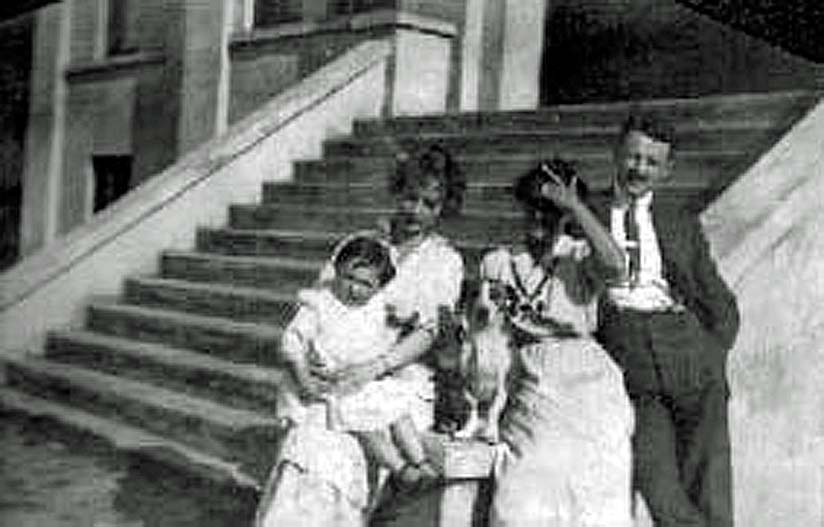


Langley - When Francis (Frank) and Annie Chamberlayn were newlyweds, Frank's father promised them a farm, in five years, in Sandhurst, England. "They thought they were getting old, and decided to try their luck in the colonies," says Langley historian Warren Sommer.
That would have been about 1911. Frank, born in Gloucester, England in 1888, was about 23 at the time the couple came to Canada. Annie was 29.
Sommer has for 10 years been researching a book on men who enlisted from Langley for service in the First World War. Each year he visits the Library and Archives Canada for a week of research. Last year he learned that Francis Chamberlayn had been discharged in Britain, and through the Internet, uncovered a name, B. Chamberlayn, who was residing on a farm in Sandhurst. "It turned out to be his daughter," Betty Chamberlayn, said Sommer, who began an e-mail correspondence.
Betty is making a copy of her father's war diary for Sommer, and arranged for her nephew to e-mail historic family photos of early Coghlan station days to the Langley historian.
Frank and Annie first resided in Vancouver or New Westminster where Frank swept streets for a time. Then he bought a horse and cart, making deliveries "until the horse died."
About that time, his luck changed and he landed a job with the B.C. Electric Railway Company which had opened the Interurban tram line between New Westminster and Chilliwack in 1910. He became an operator at the Coghlan substation, in Langley Township, one of five on the Interurban line.
The substations used large motor generators, to convert alternating current to 600 volt direct current, to operate the trams. Operators would notify the next substation up the line, as a tram was leaving, at which point the overhead lines would be powered for the next leg of the journey. "When they threw the switch you got a big arc, when the power jumped (so powerful) that you could light a cigarette from it," says Sommer. He said a local farmer, Art Brooks, told him this.
The Chamberlayns had two children before Frank enlisted. Betty, the third child, was born in Britain. "Before coming (to Canada) he was a member of the Gloucester Yeomanry, (like our military reserves). He was quite patriotic and was eager to participate in defending the empire," said Sommer.
Frank joined the Canadian Artillery. He sailed from Halifax in October, 1916, on the S.S. Missanabie. Wounded twice, his last wound in Cambrai, France, in September, 1918, may have saved his life. "It put him in the hospital and ensured he would survive to the Armistice," said Sommer. Frank was discharged to the British Isles, in August, 1919.
The family never returned to live in Canada, but the couple did make several visits, including one in 1938. The Interurban's last car between Chilliwack and New Westminster completed its run on 30 Sep 1950.
Author unknown.